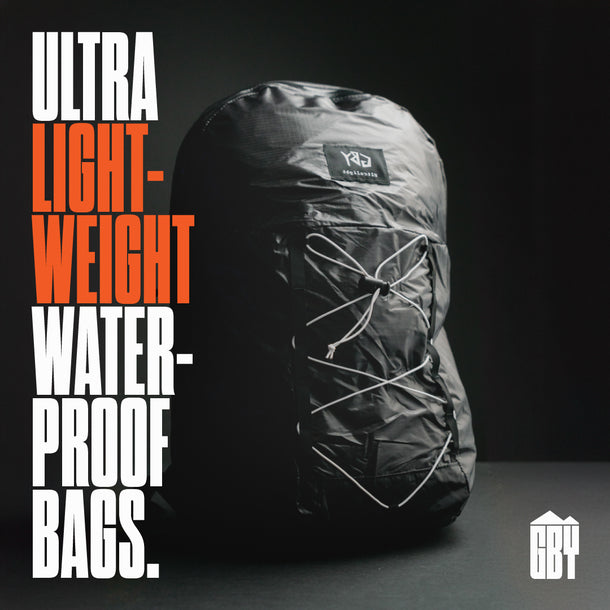Embarking on long hiking trails requires careful planning, not just in terms of the journey itself but also the gear you choose. One of the essential components for a seamless hike is selecting the right bag. This guide will help you navigate the world of ultralight hiking bags, ensuring you can enjoy your adventure without the burden of excess weight.
Understanding the Ultralight Concept
Ultralight hiking is all about reducing the weight you carry, without sacrificing comfort and functionality. This approach allows you to focus on the trail, reducing the physical strain during long hikes. Ultralight backpackers believe that less is more, opting for efficient packing strategies and gear selection. By shedding excess weight, hikers can enjoy their journey more fully, taking in the sights and sounds of nature. The key is balance, finding the right gear that delivers comfort while remaining lightweight.

Choosing an ultralight bag is a crucial step in adopting this hiking philosophy. It’s not just about having a lighter load but ensuring every piece of gear serves a significant purpose. The minimalist approach requires strategic planning, determining what essentials are necessary and what can be left behind. It’s a mindset that emphasizes practicality and efficiency, redirecting energy towards the trail rather than the pack on your back.
Material Matters
The material of your hiking bag plays a significant role in its weight and durability. Look for lightweight yet sturdy fabrics like Dyneema or Ripstop nylon, which provide both strength and weather resistance. These materials are perfect for tackling various terrains and climates. Dyneema, for example, is known for its high strength-to-weight ratio, making it popular among ultralight hikers. The fabric’s impressive resilience to wear and tear is ideal for environments where rugged conditions are expected.

While materials like Dyneema can be a bit more costly, they offer excellent longevity, reducing the need for frequent replacements. In considering material choices, balance your budget with your hiking habits and frequency. Investing in quality materials up front can ultimately lead to savings over time, as your gear is more likely to withstand the rigors of long trail adventures. Remember, the right material can drastically affect your hiking experience, often making all the difference in terms of comfort and endurance.
Sizing Up Your Needs
When selecting an ultralight hiking bag, size and capacity are key considerations. Assess the length of your hike and the essentials you’ll need to bring to ensure your bag is neither overflowing nor half empty. Finding the perfect balance between capacity and weight can truly enhance your hiking experience. A general rule is to allow about 10 liters of bag space for every day of hiking planned. This offers a good starting point, but make sure to adjust based on your personal needs.

Choosing the right size can prevent overpacking, which is a common pitfall even for seasoned hikers. A well-fitted bag should sit comfortably on your body, encouraging proper posture and movement. Many brands offer women’s specific sizing, providing tailored fits that accommodate different body shapes. Trying on different bags with weights added can be an effective method to find which capacity suits your personal needs, offering insights that are otherwise hard to gauge in an online description.
The Minimalist’s Guide to Features
Ultralight hiking bags often come with fewer features to save weight, promoting a minimalist mindset. Prioritize essential features like comfortable straps, water bottle holders, and hydration system compatibility. Avoid unnecessary extras like excessive compartments or fancy built-in organizers—these can add weight without providing practical use on the trail. Simple designs often lead to more versatile usage, allowing hikers to adapt their bags to various needs and conditions during their adventures.
Innovative features that maintain a low weight include external mesh pockets, which provide quick access to essential gear like snacks or maps. Similarly, frameless bags with removable internal frames present options to customize support based on the trail’s demanding nature. Consider bags that have adaptable storage, where compression straps allow unused space to shrink down, keeping gear tight and secure. Such features maintain balance and stability, critical factors when traversing unpredictable landscapes.
Balancing Comfort and Weight
Even with an ultralight bag, comfort should never be compromised. Ensure it has a supportive frame and adequate padding in the shoulder and hip areas. Comfort features like adjustable sternum straps can also make a world of difference. When combined with load lifter straps, they ensure the weight is evenly distributed, reducing strain on sensitive pressure points. The right balance of weight distribution and comfort can significantly enhance your hiking experience, especially on long trails.

To truly find comfort, adjustability in the fit of your hiking bag is key. Being able to tweak how the bag sits on your body ensures it adapts to different terrains and your own fatigue levels. Prioritize bags that offer easy adjustability options, allowing for dynamic changes as needed. Ventilation features in the back panel are also important, providing cooling airflow on hot trails and preventing uncomfortable moisture build-up. By maintaining comfort, you’re more likely to sustain energy and focus on long hikes.








